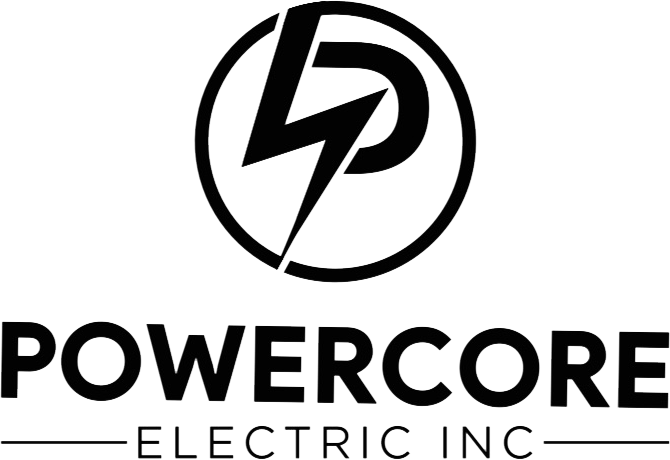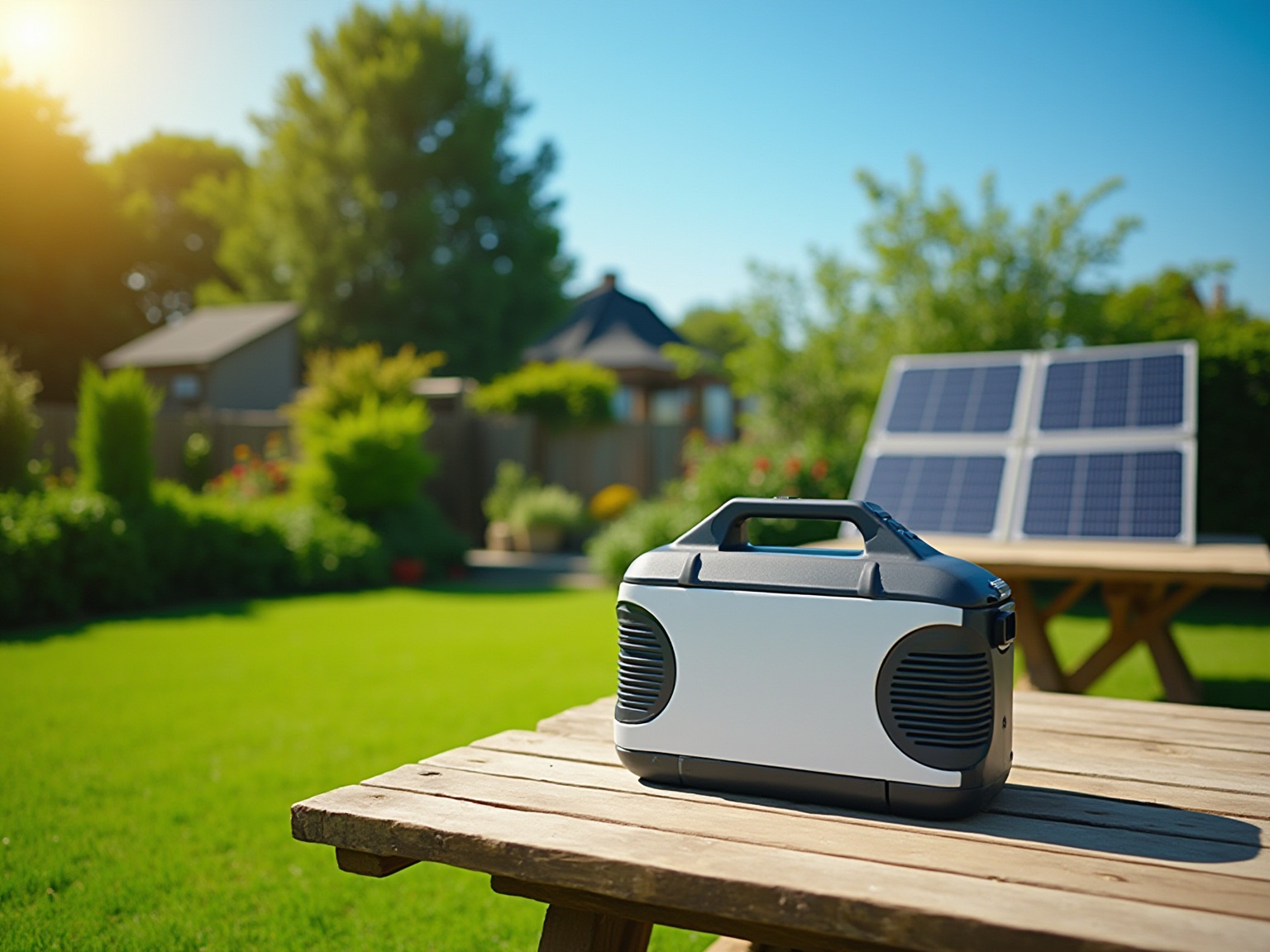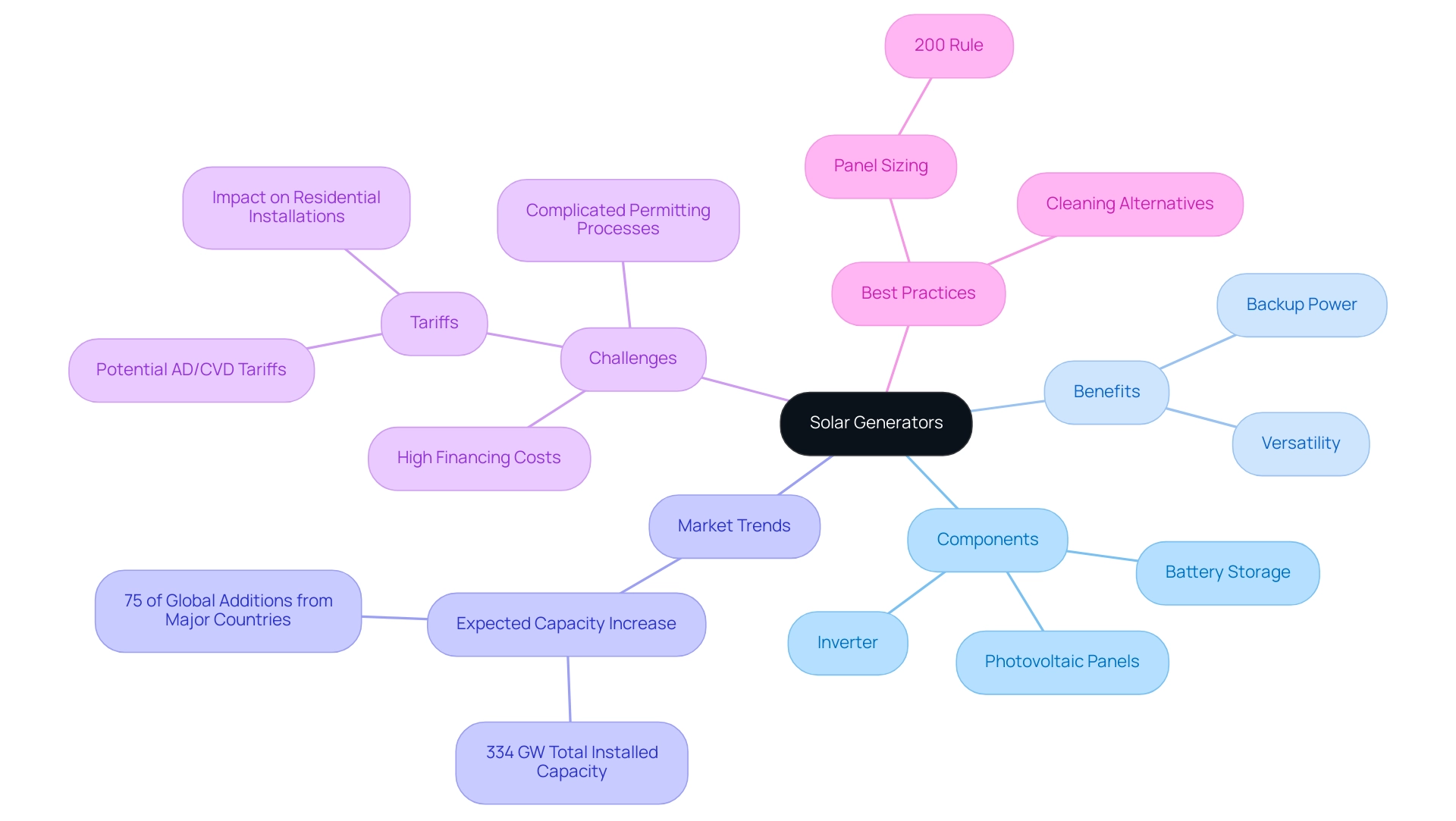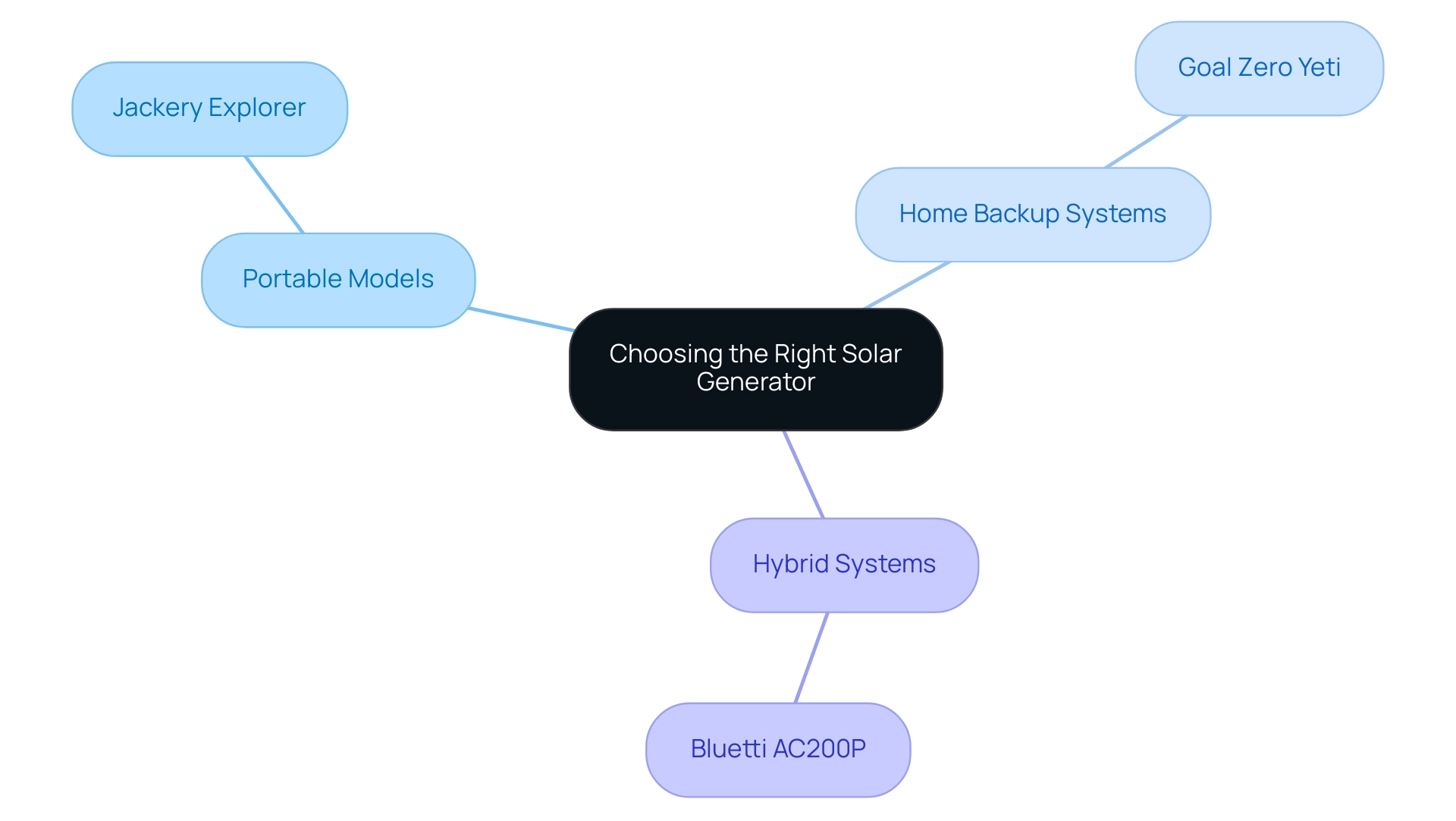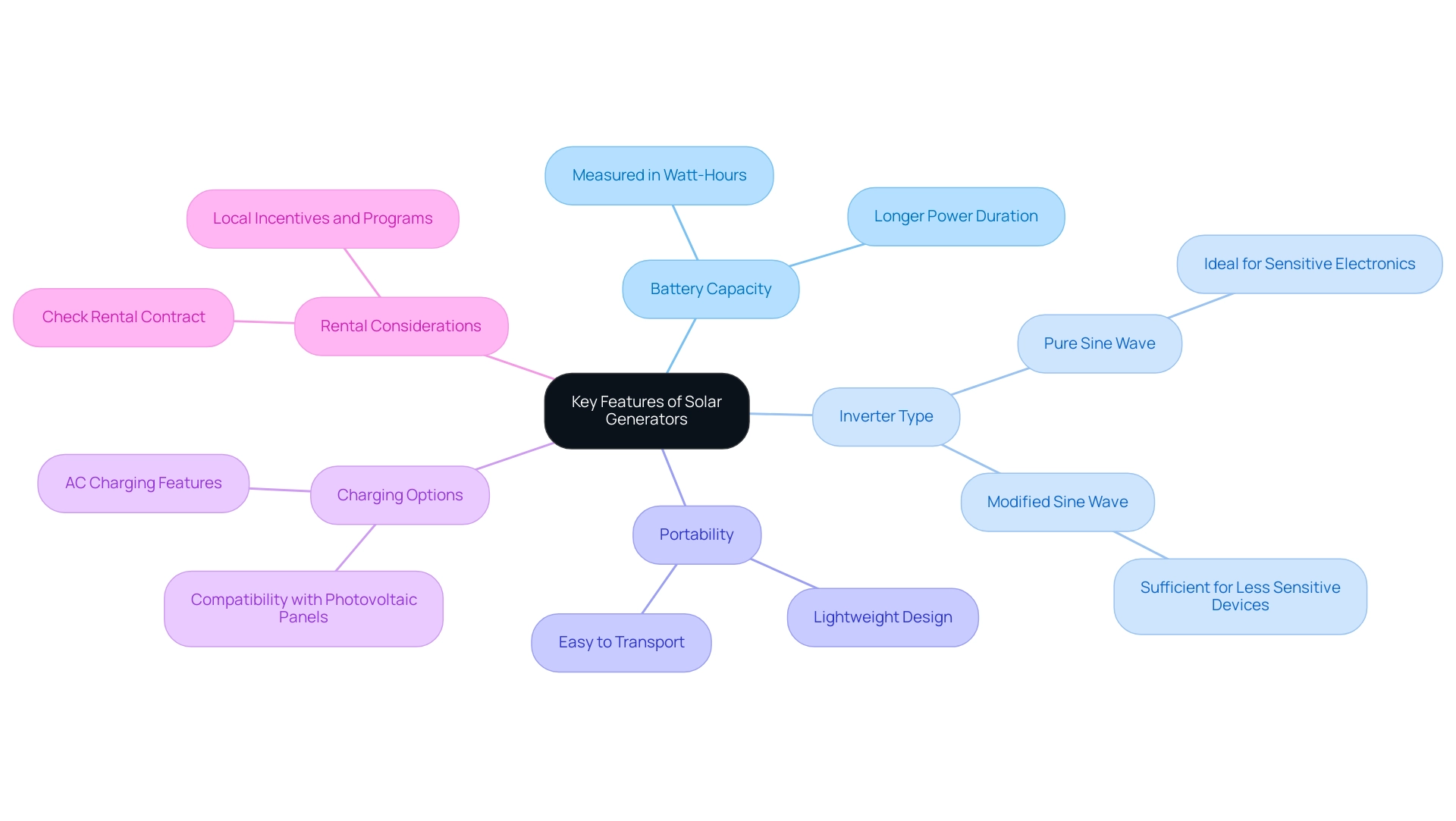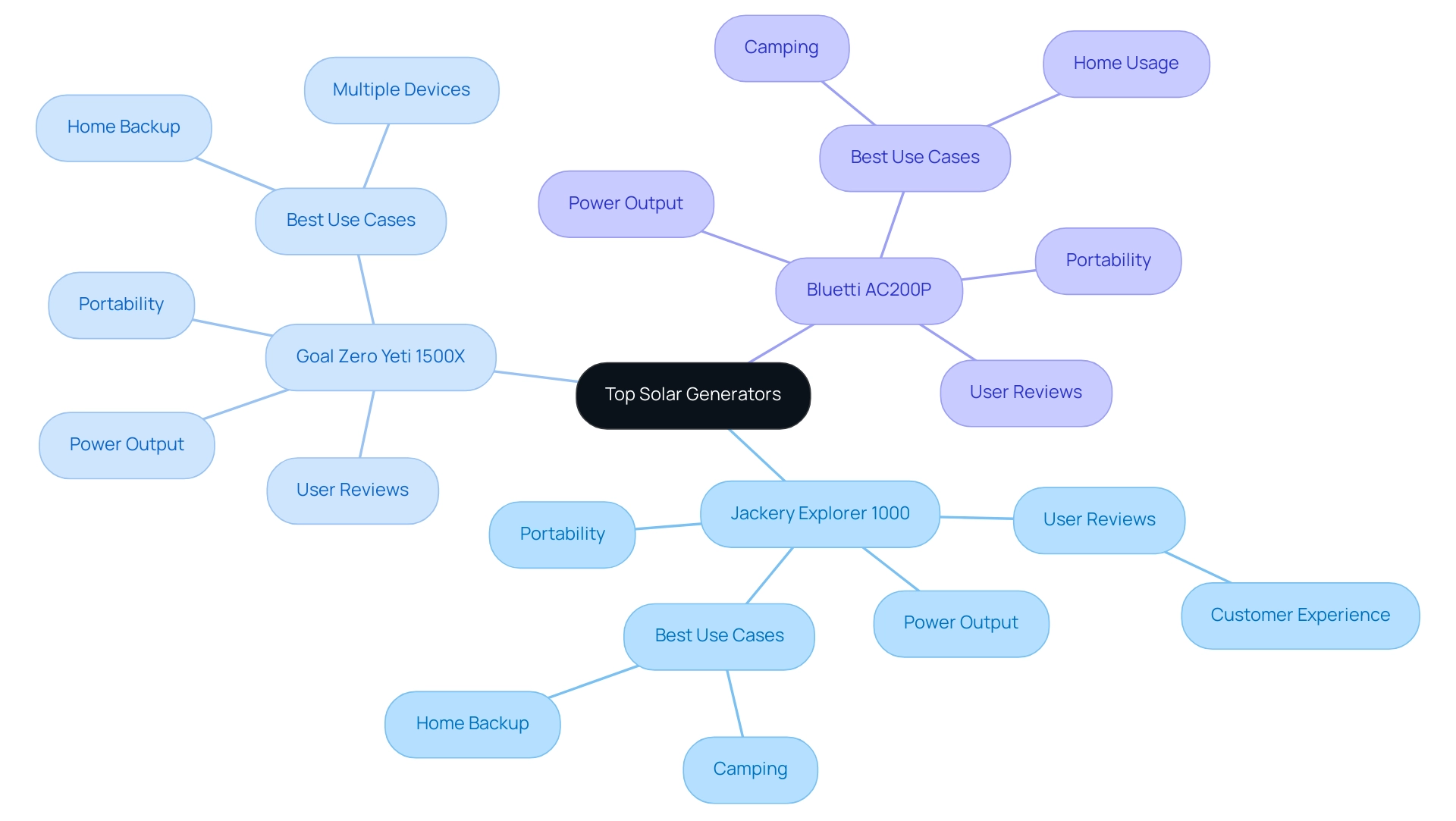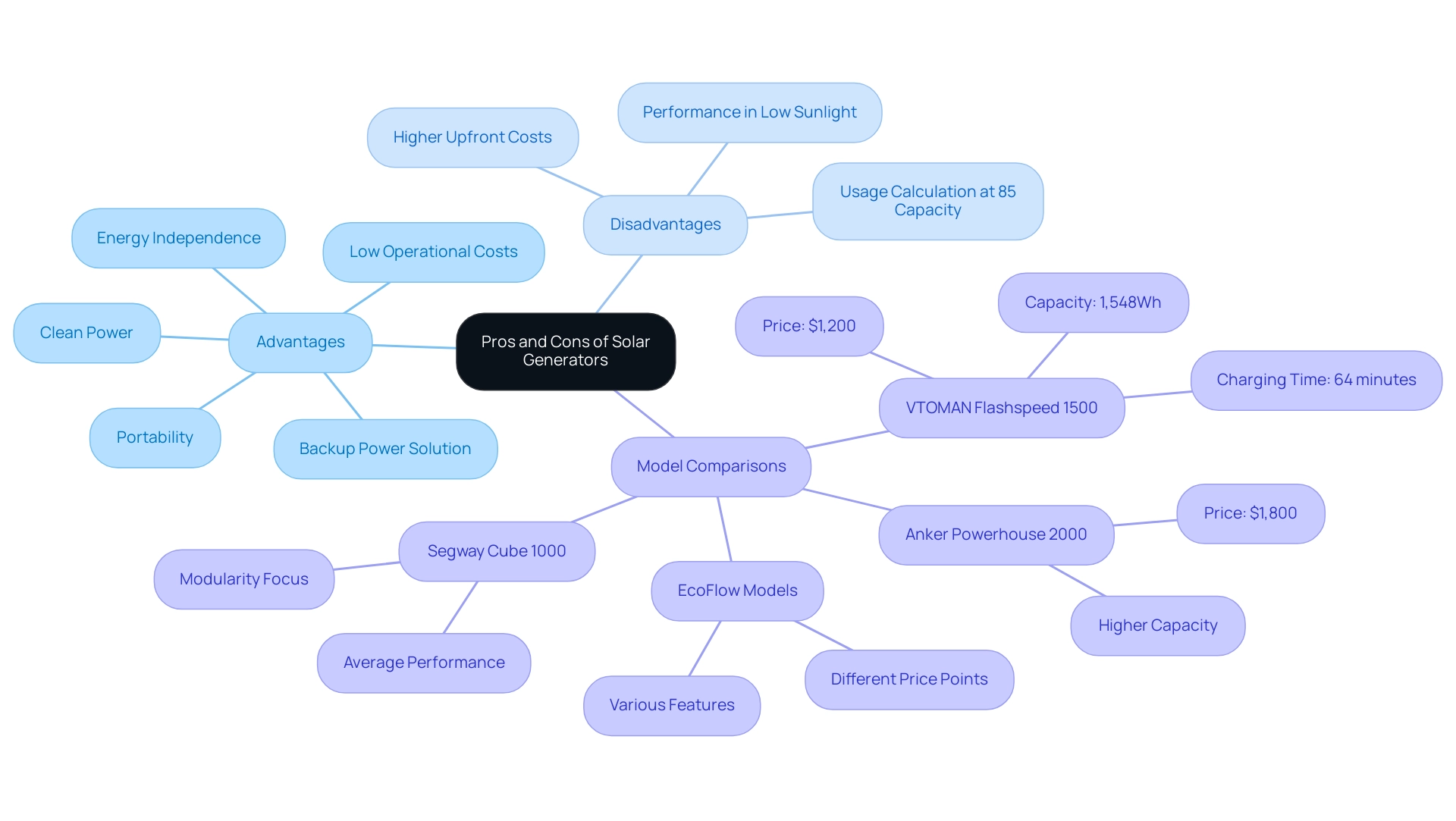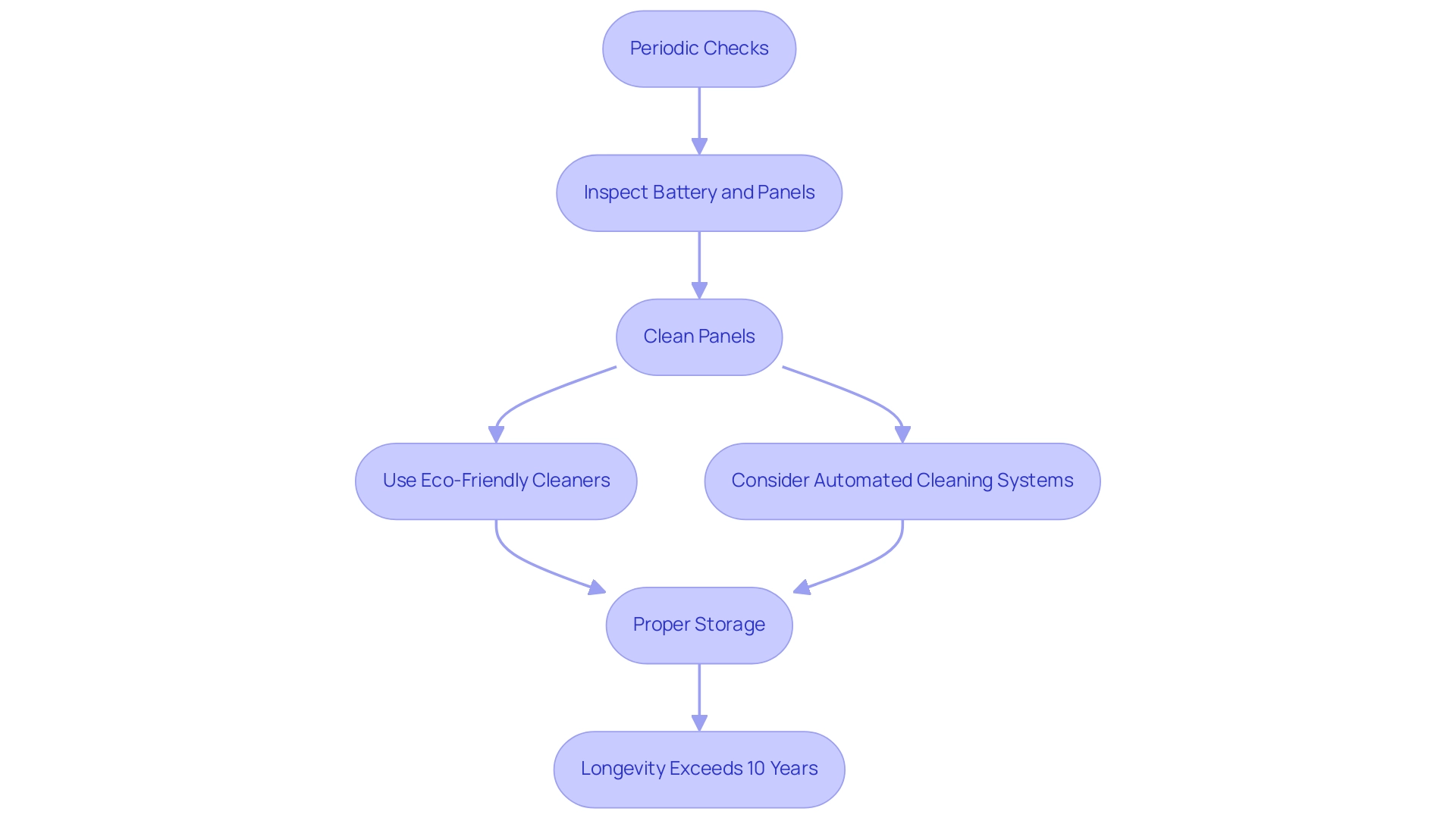Overview
The article addresses the question of which solar generator is the best for individual needs by comparing various models tailored for different applications, such as camping or home backup. It supports this by detailing key features like battery capacity, inverter types, and portability, alongside specific product recommendations, helping consumers make informed decisions based on their unique requirements and lifestyle.
Introduction
As the world shifts toward more sustainable energy solutions, solar generators are emerging as a practical choice for homeowners eager to reduce their carbon footprint while enjoying the benefits of renewable power. These innovative devices harness the sun’s energy to provide electricity, making them ideal for everything from camping adventures to emergency home backup.
With a growing array of models available, understanding the nuances of solar generators—from their essential components to the various types suited for different needs—can empower homeowners to make informed decisions.
As the solar market continues to expand, keeping abreast of the latest features, advantages, and maintenance tips will not only enhance energy independence but also contribute to a more eco-friendly lifestyle.
Whether considering the benefits of solar technology or exploring the best options on the market, this guide will illuminate the path toward harnessing solar energy effectively.
Understanding Solar Generators: Basics and Functionality
Solar power systems are innovative, portable devices that capture sunlight to generate electricity, making them an attractive option for environmentally aware homeowners looking for sustainable power solutions. At their core, these systems consist of:
- Photovoltaic panels
- A battery for power storage
- An inverter that transforms this stored power into usable electricity
Comprehending which solar generator is the best is crucial for individuals contemplating this eco-friendly option.
They are versatile, providing power during camping trips or serving as dependable backup power sources during emergencies. With an anticipated increase in photovoltaic capacity installations in 2024, residents can utilize this technology for improved energy management at their residences. As mentioned by Senior Data Analyst Nicolas Fulghum, if the current addition rate continues, we could see total installed energy capacity reach 334 GW, which would represent over half of the global capacity additions this year.
This increase means that property owners will gain access to more efficient and versatile options, prompting the question of which solar generator is the best. Additionally, being aware of market challenges, such as potential AD/CVD tariffs on imports, is crucial for making informed decisions about energy solutions. By staying informed about best practices for choosing panel inverters and understanding the advantages of residential panel sizing under the 200% rule, property owners can optimize their installations and ensure maximum efficiency.
Additionally, exploring eco-friendly cleaning alternatives for panels can aid in maintaining system efficiency, while comprehending the influence of California’s building regulations can assist residents in compliance and installation procedures. Case studies demonstrating how property owners have gained from photovoltaic systems can also offer valuable insights into the practical benefits of adopting this technology.
Types of Solar Generators: Choosing the Right One for Your Needs
When discussing energy systems, environmentally aware homeowners have a range of choices designed for various requirements, facilitating the adoption of sustainable energy solutions. You’ll find portable models, such as the Jackery Explorer series, perfect for outdoor adventures—think camping trips or tailgating—thanks to their lightweight design and easy transportability. On the other hand, home backup systems like the Goal Zero Yeti are more robust, engineered to power essential appliances during unexpected outages, ensuring you stay comfortable and connected even when the grid goes down.
For those seeking versatility, larger hybrid systems, such as the Bluetti AC200P, combine renewable and traditional power sources, offering the best of both worlds. Significantly, the 40 – 80 KWH segment is anticipated to expand at a CAGR of 18.5%, emphasizing the growing importance of renewable energy sources in today’s market. Comprehending the distinctions among these categories is essential for choosing a power source that suits your way of life and helps you identify which solar generator is the best for increasing your energy autonomy.
By considering battery capacity and power ratings, such as those offered by the EcoFlow Delta, you can make informed choices that contribute to long-term sustainability and effectively reduce your utility costs. Additionally, analyzing case studies such as BioLite’s influence, which contributed to preventing over two million tons of CO2 emissions—comparable to taking 537,000 vehicles off the road for a year—demonstrates the substantial economic and environmental advantages of solar-powered technology. By recognizing these differences and taking into account your particular requirements, you can confidently select a power source that aligns perfectly with your home, reduces utility expenses, and encourages a more sustainable lifestyle.
Key Features to Consider When Selecting a Solar Generator
Selecting the appropriate solar device can feel overwhelming, especially when considering which solar generator is the best, but concentrating on a few essential features can make the process easier and far more enjoyable for environmentally aware homeowners in Long Beach.
First up is battery capacity, measured in watt-hours; this number indicates how long you can power your devices before needing a recharge. For instance, a power source with higher watt-hours will keep your essentials running longer during an outage or while camping.
Next, consider the inverter type. Pure sine wave inverters are ideal for sensitive electronics, providing cleaner power, whereas modified sine wave inverters may suffice for less sensitive devices. Portability is another essential aspect, particularly if you intend to use your device outdoors.
Whether you’re tailgating, camping, or simply enjoying a day in the backyard, a lightweight and easy-to-transport power source will make your experience much smoother! Don’t forget to assess the charging alternatives as well; ensure your device is compatible with photovoltaic panels and has AC charging features to fit seamlessly into your lifestyle. Furthermore, for Long Beach tenants, it’s essential to verify if your rental contract permits the use of power sources and if there are any local incentives or programs available to assist your renewable objectives.
With the photovoltaic market expected to expand at a CAGR of 6.54% from 2024 to 2032, knowing which solar generator is the best will enable you to select a power source that fulfills your requirements efficiently and promotes your environmentally friendly lifestyle. Moreover, the swift increase in photovoltaic capacity installations in 2023 and 2024 highlights the significance of renewable power systems in the continuing transition of power sources. As the U.S. Energy Information Administration pointed out, crude oil output in the U.S. Lower 48 states hit a record 11.3 million barrels per day in November 2024, emphasizing the critical necessity to investigate sustainable options such as renewable energy.
Comparative Review of Top Solar Generators on the Market
When it comes to selecting which solar generator is the best for home backup and energy production, a few standout models deserve your attention. The Jackery Explorer 1000 is celebrated for its portability and user-friendly interface, making it an excellent choice for eco-conscious individuals who prioritize convenience and efficiency. Users often praise its performance, with one happy customer noting,
The Explorer 1000 has transformed our camping trips—it’s so easy to use!
Additionally, Jackery Inc. has sold more than 3 million units in the last five years, underscoring its popularity and reliability in the market. It’s advisable to keep the device stored with at least an 80 percent charge, as Trevor Raab recommends, to maintain battery health.
On the other hand, the Goal Zero Yeti 1500X offers robust power capabilities that can prepare your home for unexpected outages. This model is frequently recommended for its reliability and capacity to run multiple devices simultaneously, ensuring you’re ready for anything.
Additionally, the Bluetti AC200P stands out with its impressive high capacity and versatility, providing various output options that cater to both camping adventures and home usage.
Its design emphasizes addressing a range of power requirements, which is becoming increasingly crucial for residents. These models bring unique features to the table, such as varying weights, power outputs, and charging speeds, allowing you to assess which solar generator is the best for making an informed choice. With options customized for various lifestyles, you can discover the ideal generator to fulfill your needs this year.
Additionally, it’s crucial to examine how Tesla home chargers can enhance these green solutions, enabling homeowners to effectively charge their electric vehicles with renewable power. Furthermore, investigating public initiatives that promote renewable power adoption can further improve your investment in sustainable technology. Moreover, grasping the relative benefits of gas versus renewable power sources can offer important perspectives on the optimal power solutions for your residence, particularly regarding reliability and cost-efficiency.
With the increasing conversations regarding solar panel efficiency even on overcast days, investing in solar technology is a wise decision for environmentally aware residents aiming to improve their autonomy.
Pros and Cons of Solar Generators: Weighing Your Options
Solar power systems offer a fantastic chance for environmentally aware homeowners enthusiastic about utilizing renewable resources. They come with several advantages, such as:
- Generating clean power
- Being portable for various applications
- Maintaining low ongoing operational costs
Not only do these devices offer a practical backup power solution, but they also promote energy independence.
A standout option is the VTOMAN Flashspeed 1500, which offers a robust capacity of 1,548 and can be fully charged in a remarkable 64 minutes, one of the fastest charging times available today. When comparing models, it becomes essential to determine which solar generator is the best, as brands like Anker and EcoFlow offer different features and price points alongside the VTOMAN. For instance, while the VTOMAN is priced around $1,200, the Anker Powerhouse 2000 is available for approximately $1,800, offering different capacities and features.
However, it’s important to acknowledge some limitations—solar power systems often come with higher upfront costs than conventional models and may struggle in low sunlight conditions. As noted by Ry Crist from CNET, when estimating usage, it’s prudent to plan for around 85% of the stated capacity. For instance, the Segway Cube 1000, a newcomer in the portable power station space, emphasizes modularity but may not meet all users’ performance needs.
Although photovoltaic systems generally necessitate larger upfront expenditures, they can lead to considerable savings in operational expenses over time. When selecting a power source, take into account aspects like:
- Capacity
- Charging speed
- Brand reputation
By evaluating these pros and cons, real-world examples, and cost comparisons, you can make an informed decision that aligns with your budget and commitment to sustainability.
Maintenance and Longevity of Solar Generators
Solar generators are a fantastic choice for eco-conscious homeowners, not only for their low maintenance requirements compared to traditional generators but also for their potential longevity. To ensure optimal performance, periodic checks on the battery and photovoltaic panels are essential. A clean panel is crucial—dirt and debris can significantly hinder efficiency, making regular cleaning a must.
Innovative cleaning solutions, such as utilizing eco-friendly cleaners or automated cleaning systems, can improve production and sustainability, allowing you to maximize your investment. Properly storing the device also contributes to its longevity; with the right care, many energy-producing units can exceed a lifespan of 10 years. This durability eases worries regarding long-term ownership and positions power generators as a dependable solution.
As one expert pointed out, ‘Did you observe a significant decline in power production?’ This issue can be due to a variety of factors, with the most common being dust and debris buildup. Comprehending maintenance requirements grows more crucial, particularly as the proportion of utility-scale plants in global PV capacity increases reaches its lowest since 2012.
Moreover, with recent government initiatives aimed at promoting renewable energy, there are more opportunities than ever for homeowners to benefit from solar programs. Embracing these practices not only boosts efficiency but also aligns with a more sustainable lifestyle, contributing to your journey towards a greener home.
Conclusion
Embracing solar generators can significantly enhance energy independence while contributing to a more sustainable lifestyle. As explored throughout this guide, these innovative devices come in various types, each tailored to meet specific needs, whether for camping adventures or as reliable backup power sources at home. Understanding their core components, such as battery capacity and inverter types, is crucial for selecting the right model that aligns with individual lifestyles and energy requirements.
The benefits of solar generators extend beyond convenience; they offer a pathway to reducing utility costs and minimizing environmental impact. With emerging technologies and a growing market, homeowners have access to a wide array of options that cater to different power needs and preferences. Moreover, considering the maintenance and longevity aspects ensures that investments in solar technology yield long-term benefits, reinforcing the commitment to renewable energy.
In summary, the shift towards solar energy is not just a trend but a meaningful step toward a sustainable future. By making informed choices and staying updated on the latest innovations, homeowners can not only enjoy the advantages of solar generators but also play an active role in the transition to cleaner energy solutions. Now is the time to harness the power of the sun and take control of energy consumption while contributing positively to the environment.
